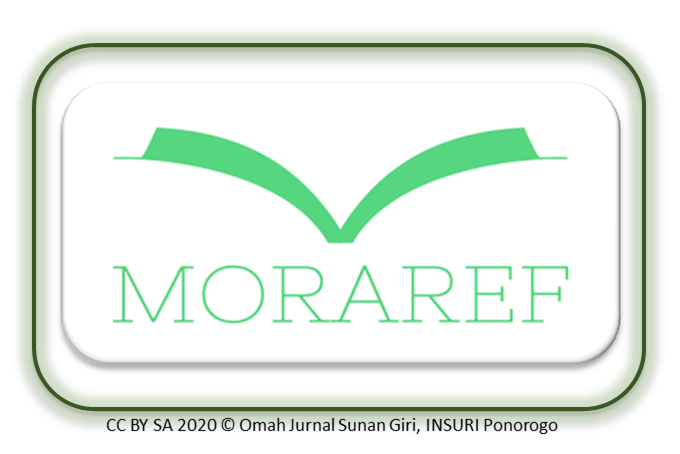Peta Dinamika Dakwah dalam Mobilitas Muslim Indonesia di Abad ke-20
Keywords:
mobility, Indonesian muslim, da’wa activityAbstract
This paper explores how Indonesian Muslim experience mobility in their life, particularly in Islamic da’wa aspect. Departs of theories of social mobility, this paper maps where, why, and how they manage that mobility, horizontally in geographical position or vertically in social identity. Among the earlier generation, in which Indonesia was under Dutch colonial government, that mobility was undoubtedly related to the existing colonialization influence. Mostly in this period, the mobility’s are in education, religion, economy, and military background. While in the later generation, post-1945, the mobility of Indonesia Muslim is going wider and higher. Though the background of their mobility is still not far from education, religion, and economy field, the reasons why do they mobile are more various. Nevertheless, both in “old” and “new” era, the mobility of Indonesian Muslim made a significant impact on spreading the teaching of Islam (da’wa) to where they migrated.
References
Baso, A. (2013). Pesantren Studies 2a. Jakarta: Pustaka Afid.
Dhofier, Z. (2000). “Refleksi atas Visi dan Misi IAIN” dalam Hidayat, K. & Prasetyo, H. (Editor). Problem & Prospek IAIN: Antologi Pendidikan Islam. Jakarta: Departemen Agama RI.
Eisenberger, J. (1928). Indie en de Bedevaart naar Mekka. Leiden: M. Dubbeldeman.
Gobee, E. & Adriaanse, C. (1993). Nasihat-Nasihat C. Snouck Hurgronje semasa Kepegawaiannya Kepada Pemerintah Hindia Belanda 1889-1936 Seri VIII. Jakarta: INIS.
Hurgronje, C. (1994). Kumpulan Karangan Snouck Hurgronje IX. Jakarta: INIS.
Kompas, “Muhammadiyah, Kelas Menengah, dan Demokratisasi” (5 Juli 1995).
Mrazek, R. (2002). Engineers of Happy Land: Technology and Nationalism in a Colony. Princeton: Princeton University Press.
Madjid, M. (2008). Berhaji di Masa Kolonial. Jakarta: CV. Sejahtera.
Mantra, I. (1978). “Mobilitas Penduduk pada Masyarakat Padi Sawah: Kasus Dukuh Kadirejo dan Piring”. Prisma, 8(9). Jakarta: LP3ES.
Mastuki. (2016). Kebangkitan Santri Cendekia: Jejak Historis, Basis Sosial, dan Persebarannya. Tangerang Selatan: Pustaka Compass.
Munir, R. (1981). Migrasi: Dikutip dari Buku Dasar-Dasar Demografi. Jakarta: Lembaga Demografi Fakultas Ekonomi Universitas Indonesia.
Putuhena, M. (2007). Historiografi Haji Indonesia. Yogyakarta: LKiS.
Rohmatulloh, D. (2015). Dinamika Tegalsari: Santri dan Keturunan Kiai Pesantren Tegalsari Ponorogo Abad XIX-XX. Jakarta: STAINU Press.
Rohmatulloh, D. (2018). “Local Muslim Heritage: Pelestarian Warisan Budaya Pesantren di Tegalsari Ponorogo”. PROCEEDINGS: Annual Conference for Muslim Scholars, (Series 1), 232-239. Retrieved from http://proceedings.kopertais4.or.id/index.php/ancoms/article/view/125
Sorokin, P. A. (1941). Social and Cultural Dynamics Vol 4. New York: American Book Co.
Susilowati, M. (1990). Diktat Pengantar Geografi. Manado: Fakultas Pendidikan Ilmu Pengetahuan Sosial dan Studi Kependudukan dan Ilmu Pendidikan.
Zelinsky, W. (1971). “The Hypothesis of the Mobility Transition”. Geographical Review, 61(2), 219-249. doi:10.2307/213996
Zuhri, S. (1972). Almaghfur-lah KH Abdul Wahab Chasbullah, Bapak dan Pendiri Nahdlatul Ulama. Jakarta: Penerbit Yamunu.
Downloads
Published
Issue
Section
License
The author(s) retain/s the copyright and grant/s Muharrik: Jurnal Dakwah dan Sosial the first publication rights licensed under the Creative Commons Attribution-NonCommercial 4.0 International (CC BY-NC 4.0) , which allows others to access (search, read, download and quote), share (copy and redistribute the material in any media or format) and adapt (mix, modify and develop) works for legitimate non-commercial purposes, with recognition of the authorship of the work and its initial publication in this journal.













